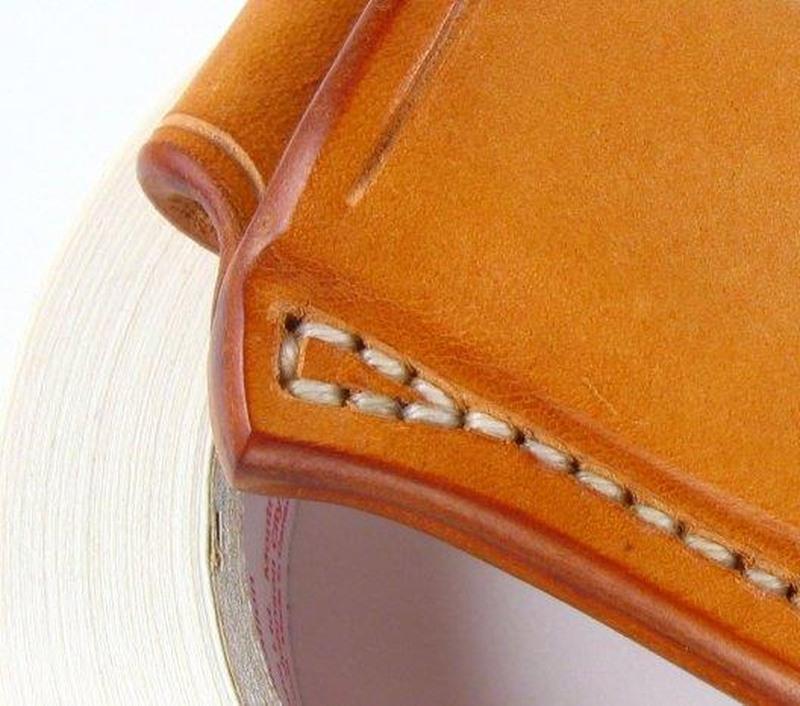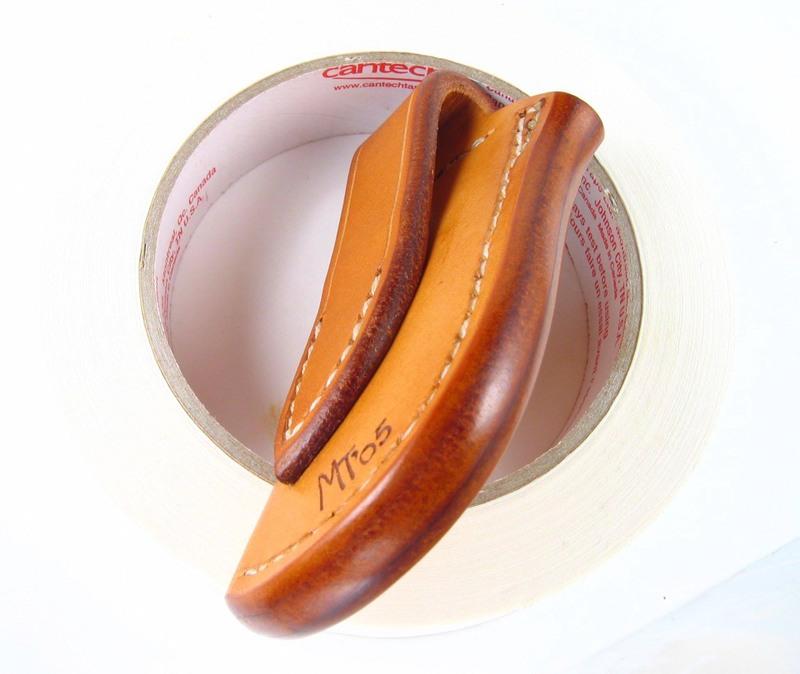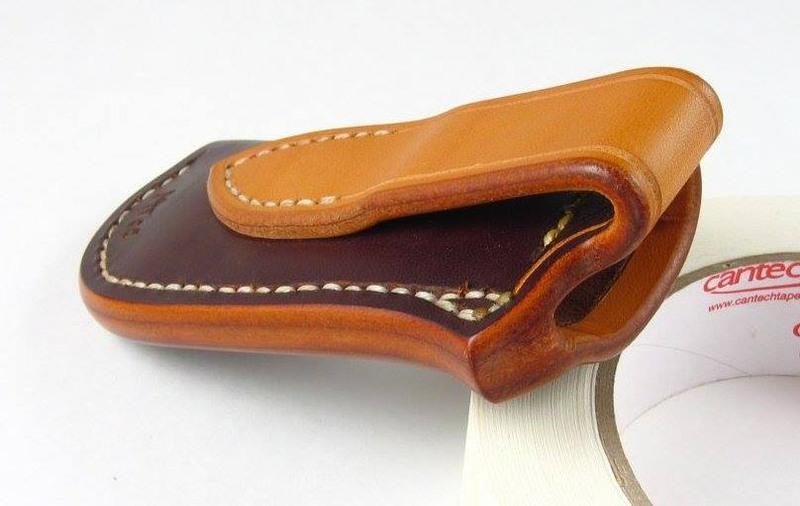CraigC
Hawkeye
I originally intended to do a whole series of articles on leatherwork but life got in the way. Here's a brief note about two of the most important aspects of leather work, edges and stitching.
Quality leatherwork is won and lost in edges and stitching. It's basic stuff but it's what separates the pros from the amateurs, or at least it should. I touched on this in my tutorial but in my opinion, to paraphrase my mentor Chuck Burrows, edge paint does not belong on professional leather work. Edges should be beveled, smoothed and burnished, not painted. Sanding and burnishing removes flaws but it takes time to do, while painting covers them up. Most pros do burnish their edges but some do not. I reckon it's a case of the consumer not knowing any better and paying a premium price based on reputation or name recognition, rather than a critical assessment of the maker's work. I'm on a knife sheath making Facebook group and a member recently posted pics of some sheaths he had done and the edges are spectacular. According to the maker, he spends an hour or more smoothing and burnishing his edges.



This is art. Every surface is carefully blended, none are untouched. I have seen none better and work I've seen touted as "the best" does not even come close to this. If you're paying exorbitant prices for plain leather goods with painted edges, rather than carefully burnished edges, maybe you need to look elsewhere?
Where this work falls short is in the stitching. While the stitching is 99% carefully executed and beautiful, perfectly spaced and a consistent distance from the edge, the downfall is that the holes are drilled. Drilling stitching holes on a drill press is popular because it's easy but it is far from ideal. The problem is that drilling removes material, whereas punching them with an awl or chisel (or machine stitching), simply separates the fibers of the material. Drilled holes never close up and will always have little thread tension. Punched holes have much better thread tension and will close up after stitching. Drilling also produces whiskers of leather around the holes, punching never does that. Stitching should fade into the background but drilled holes always stand out, at least to the discerning eye. In my opinion, even if you machine stitch, you should spend ten extra seconds with a harness needle pulling your front thread tail to the back before cutting it off.
Quality leatherwork is won and lost in edges and stitching. It's basic stuff but it's what separates the pros from the amateurs, or at least it should. I touched on this in my tutorial but in my opinion, to paraphrase my mentor Chuck Burrows, edge paint does not belong on professional leather work. Edges should be beveled, smoothed and burnished, not painted. Sanding and burnishing removes flaws but it takes time to do, while painting covers them up. Most pros do burnish their edges but some do not. I reckon it's a case of the consumer not knowing any better and paying a premium price based on reputation or name recognition, rather than a critical assessment of the maker's work. I'm on a knife sheath making Facebook group and a member recently posted pics of some sheaths he had done and the edges are spectacular. According to the maker, he spends an hour or more smoothing and burnishing his edges.



This is art. Every surface is carefully blended, none are untouched. I have seen none better and work I've seen touted as "the best" does not even come close to this. If you're paying exorbitant prices for plain leather goods with painted edges, rather than carefully burnished edges, maybe you need to look elsewhere?
Where this work falls short is in the stitching. While the stitching is 99% carefully executed and beautiful, perfectly spaced and a consistent distance from the edge, the downfall is that the holes are drilled. Drilling stitching holes on a drill press is popular because it's easy but it is far from ideal. The problem is that drilling removes material, whereas punching them with an awl or chisel (or machine stitching), simply separates the fibers of the material. Drilled holes never close up and will always have little thread tension. Punched holes have much better thread tension and will close up after stitching. Drilling also produces whiskers of leather around the holes, punching never does that. Stitching should fade into the background but drilled holes always stand out, at least to the discerning eye. In my opinion, even if you machine stitch, you should spend ten extra seconds with a harness needle pulling your front thread tail to the back before cutting it off.
